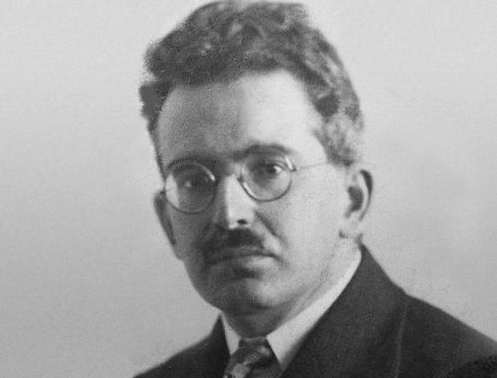In Jean-Paul Sartre’s 1938 philosophical novel Nausea, which he considered one of his finest works of fiction or otherwise, the stricken protagonist Antoine Roquentin cures his existential horror and sickness with jazz—specifically with an old recording of the song “Some of These Days.” Which recording? We do not know. “I only wish Sartre had been more specific about the names of the musicians on the date,” writes critic Ted Gioia in a newly published essay, “I would love to hear the jazz record that trumps Freud, cures the ill, and solves existential angst.”
The song was first recorded in 1911 by a Ukranian-Jewish singer named Sophie Tucker, who made her name with it, and was written by a black Canadian named Shelton Brooks. But Sartre’s hero refers to the singer as an African-American, or as “the Negress,” and to its writer as “a Jew with Black eyebrows.” Was this a mix-up? Or did Sartre refer to another of the hundreds of recordings of the song? (Perhaps Ethel Waters, below?). Or, this being a work of fiction, and Roquentin himself a failed writer, are these identifications made up in his imagination?
In his description of the recording, Roquentin reduces the singer and composer to two broad types: the jazz singing “Negress” and the “Jew”—“a clean-shaven American with thick black eyebrows,” who sits in a “New York skyscraper.”
This stereotyping creates what Miriama Young calls “an objectification of the voice and the persona behind it.” In the novel’s strangely happy ending, Roquentin recovers his disintegrating self by attaching it to these nameless, static figures, who are as repetitious as the record playing over and over on the phonograph, and who are themselves somehow “saved” by the music.
Sartre,” James Donald argues, “still believed in the redemptive power of art.” In the last mention of the record, Roquentin asks to hear “the Negress sing…. She sings. So two of them are saved: the Jew and the Negress. Saved.” And yet, rather than discovering in the music a redemptive authenticity, argues Donald, Sartre’s use of jazz in Nausea is more like Al Jolson’s in The Jazz Singer, a “creative act of mishearing and ventriloquism,” or a “generative inauthenticity.”
Sartre’s early conception of “the redemptive power of art” depended on such inauthenticity; “the work of art is an irreality,” he writes in 1940 in The Imaginary: A Phenomenological Psychology of the Imagination. As in Roquentin’s diary, writes Adnan Menderes, or the novel itself, “in a work of art the here-and-now existence of human being could be shown as interwoven in necessary relations. But in contrast to the work of art, in the real world the existence of human being is contingent and for this very reason it is free.” It is that very freedom and contingency out in the world, the inability to ground himself in reality, that produces Roquentin’s nausea and the existentialist’s crisis. And it is the jazz recording’s “irreality” that resolves it.
Sartre’s use of the racialized types of “Negress” and “Jew” as foils for the complicated, troubled European psyche is reminiscent of Camus’ later use of “the Arab” in The Stranger. Though he critically explored issues of racism and anti-Semitism at length in his later writing, he was perhaps not immune to the primitivist tropes that dominated European modernism and that, for example, made Josephine Baker famous in Paris. (“The white imagination sure is something when it comes to blacks,” Baker herself once wearily observed.) But these types are themselves unreal, like the work of art, projections of Roquentin’s imaginative search for solidity in the exotic otherness of jazz. Nearly ten years after the publication of Nausea, Sartre wrote of the pull jazz had on him in a short, tongue-in-cheek essay called “I Discovered Jazz in America,” which Michelman describes as “like an anthropologist describing an alien culture.”
In the 1947 essay, Sartre writes of the music he hears at “Nick’s bar, in New York” as “dry, violent, pitiless. Not gay, not sad, inhuman. The cruel screech of a bird of prey.” The music is animalistic, immediate, and strange, unlike European formalism: “Chopin makes you dream, or Andre Claveau,” writes Sartre, “But not the jazz at Nick’s. It fascinates.” Like Roquentin’s recording, the Nick’s Bar jazz band is “speaking to the best part of you, to the toughest, to the freest, to the part which wants neither melody nor refrain, but the deafening climax of the moment.”
Gioia recommends that we abandon Theodor Adorno as the go-to European academic reference for jazz writing (I’d agree!) and instead refer to Sartre. But I’d be hesitant to recommend this description. Jazz, improvisatory or otherwise, does extraordinary things with melody and refrain, tearing apart traditional song structures and putting them back together. (See, for example, Dizzy Gillespie’s “Salt Peanuts” from 1947, above.) But it does not abandon musical form altogether in a sustained, formless “climax of the moment,” as Sartre’s sexualized phrase alleges.
Yet in this new jazz—the crashing, chaotic bebop so unlike the crooning big band and show tunes Sartre admired in the 30s—it would be easy for the enthusiast to hear only climax. This music excited Sartre very much, writes Gioia; he “called jazz ‘the music of the future’ and made an effort to get to know Miles Davis and Charlie Parker [above and below], and listen to John Coltrane,” though “his writings on the subject are more atmospheric than analytical.”
With humor and vivid description, Sartre’s essay does a wonderful job of conveying his experience of hearing live jazz as an amused and overawed outsider, though he seems to have some difficulty understanding exactly what the music is on terms outside his excitable emotional response. “The whole crowd shouts in time,” writes Sartre, “you can’t even hear the jazz, you watch some men on a bandstand sweating in time, you’d like to spin around, to howl at death, to slap the face of the girl next to you.”
Perhaps what Sartre heard, experienced, and felt in live bebop was what he had always wanted to hear in recorded jazz, an analogue to his own philosophical yearnings. In an article on one of his major influences, Husserl, written the year after the publication of Nausea, Sartre describes the way we “discover ourselves” as “outside, in the world, among others,” not “in some hiding place.” Strong emotions, “hatred, love, fear, sympathy—all those famous ‘subjective reactions that were floating in the malodorous brine of the mind…. They are simply ways of discovering the world.”
We come to authentic existence, writes Sartre—using a phrase that would soon resound in Jack Kerouac’s coming existential appropriation of jazz—“on the road, in the town, in the midst of the crowd, a thing among things, a human among humans.” In this way, Gioia speculates, Sartre likely “saw jazz as the musical manifestation of the existential freedom he described in his philosophical texts.” Sartre may have misread the formal discipline of jazz, but he describes hearing it live, among a sweating, throbbing crowd, as an authentic experience of freedom, unlike the recording that saves Roquentin through repetition and “irreality.” In both cases, however, Sartre finds in jazz a means of transcendence.
Related Content:
Lovers and Philosophers — Jean-Paul Sartre & Simone de Beauvoir Together in 1967
Jazz ‘Hot’: The Rare 1938 Short Film With Jazz Legend Django Reinhardt
Josh Jones is a writer and musician based in Durham, NC. Follow him at @jdmagness





